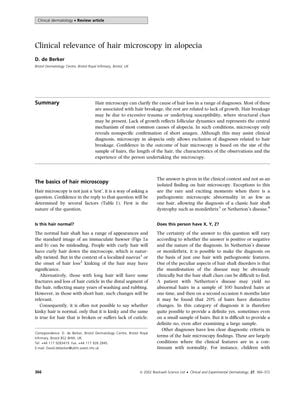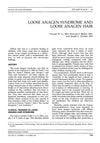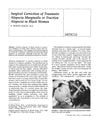Clinical Relevance of Hair Microscopy in Alopecia
July 2002
in “
Clinical and Experimental Dermatology
”
hair microscopy hair breakage structural abnormalities follicular dynamics alopecia hair shaft dystrophies congenital alopecia anagen phase limitations alopecia areata hair fragility disorders hair loss hair damage hair structure issues hair growth cycle baldness hair shaft disorders inherited hair loss growth phase issues patchy hair loss brittle hair

TLDR Hair microscopy is useful for diagnosing certain hair loss conditions but has limitations and must be interpreted carefully.
In the 2002 review, hair microscopy was highlighted as a diagnostic tool for hair loss, useful for identifying hair breakage due to trauma or structural abnormalities, and for assessing follicular dynamics related to common alopecia causes. The technique's reliability is influenced by factors such as sample size and examiner's experience, and while it can sometimes provide a definitive diagnosis, particularly in hair shaft dystrophies, it often cannot rule out conditions definitively. Hair microscopy is most beneficial for diagnosing congenital alopecia, differentiating between hair shaft abnormalities and anagen phase limitations, and identifying conditions like alopecia areata and hair fragility disorders in both children and adults. However, its utility is limited for generalized or pattern hair loss in adults. The review stressed the importance of interpreting microscopy findings within the clinical context and having clear diagnostic questions when using this tool.





